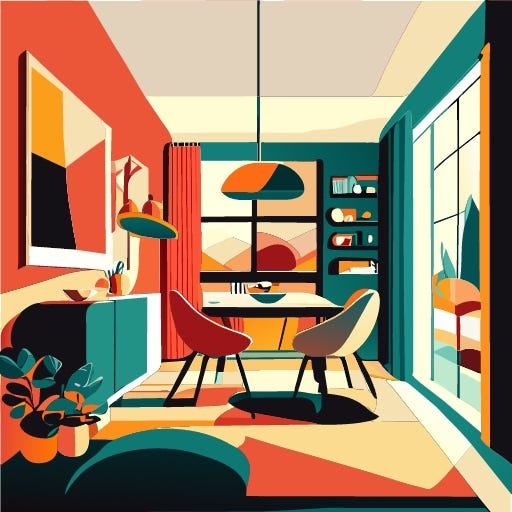60-30-10? What is it?
If you want to decorate your home with style and harmony, you might want to try the 60-30-10 rule. This is a simple guideline that helps you balance the colors and create a pleasing aesthetic. Here's how it works:
- 60% of your room should be the dominant color. This is usually a neutral or muted tone that covers the walls, floors, and large furniture pieces. It sets the mood and the background for the rest of the room. To choose a dominant color, you can start by looking at your existing furniture or flooring, and pick a color that matches or complements them. You can also use a color wheel or a palette generator to find a color that suits your style and preference. Some examples of neutral colors are white, beige, gray, or cream.
- 30% of your room should be the secondary color. This is a contrasting or complementary color that adds some interest and variety. It can be applied to smaller furniture, curtains, rugs, or accent walls. It should work well with the dominant color, but not overpower it. Some examples of secondary colors are blue, green, yellow, or purple.
- 10% of your room should be the accent color. This is the most vibrant and eye-catching color that adds some personality and flair. It can be used for accessories, pillows, artwork, or decorative items. It should pop out and create focal points in the room. Some examples of accent colors are red, orange, pink, or gold.
The 60-30-10 rule is not a strict formula, but a helpful tool to guide your choices and create a harmonious look. You can experiment with different colors and shades, as long as you keep the proportions in mind. You can also use patterns, textures, and materials to add more depth and dimension to your space. The 60-30-10 rule is a great way to unleash your creativity and have fun with interior design.
#color #theory #60-30-10 #interior #design #accent #dominant #shades #formula #neutral




